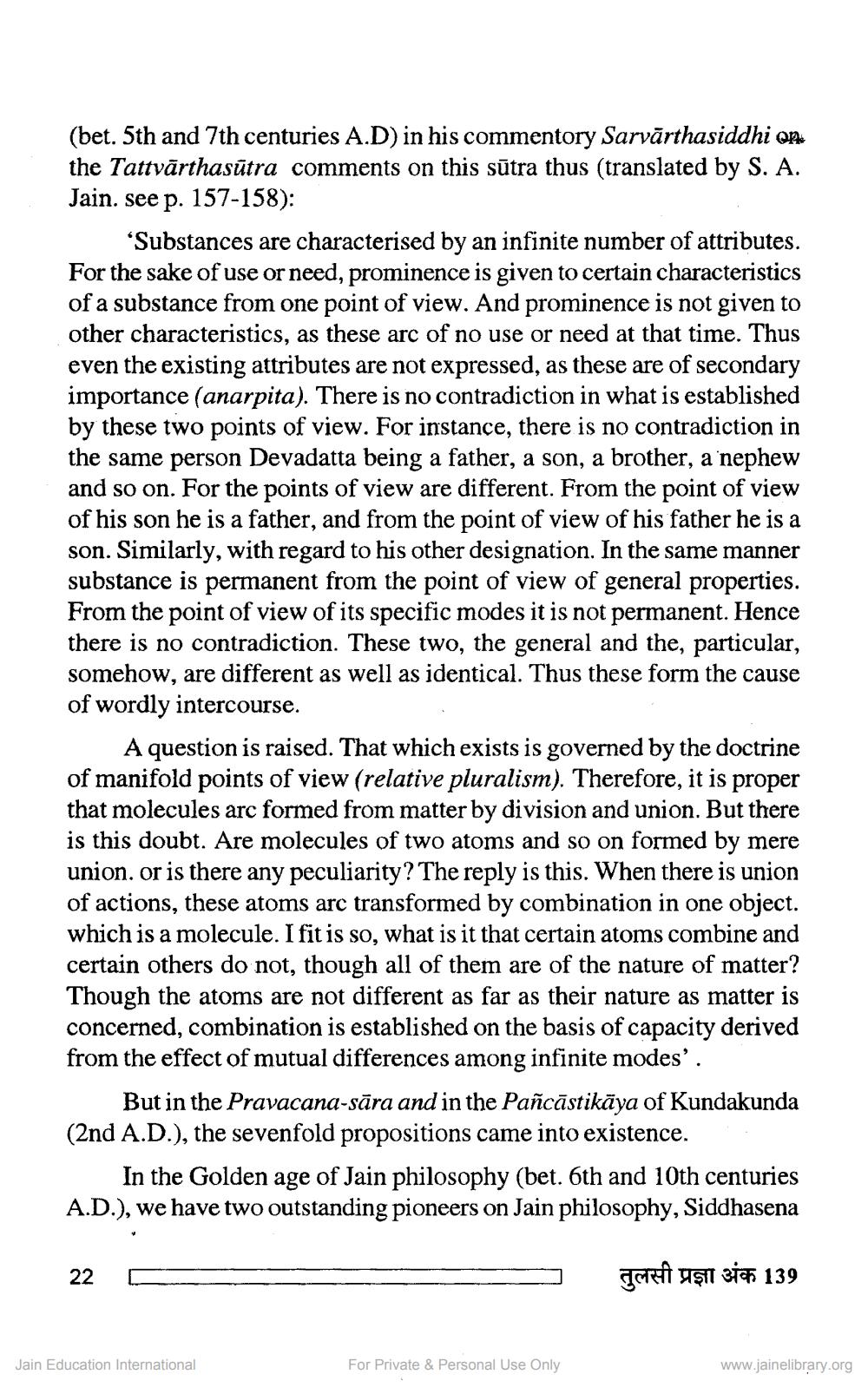________________
(bet. 5th and 7th centuries A.D) in his commentory Sarvārthasiddhi on the Tattvārthasūtra comments on this sūtra thus (translated by S. A. Jain. see p. 157-158):
'Substances are characterised by an infinite number of attributes. For the sake of use or need, prominence is given to certain characteristics of a substance from one point of view. And prominence is not given to other characteristics, as these arc of no use or need at that time. Thus even the existing attributes are not expressed, as these are of secondary importance (anarpita). There is no contradiction in what is established by these two points of view. For instance, there is no contradiction in the same person Devadatta being a father, a son, a brother, a nephew and so on. For
. For the points of view are different. From the point of view of his son he is a father, and from the point of view of his father he is a son. Similarly, with regard to his other designation. In the same manner substance is permanent from the point of view of general properties. From the point of view of its specific modes it is not permanent. Hence there is no contradiction. These two, the general and the, particular, somehow, are different as well as identical. Thus these form the cause of wordly intercourse.
A question is raised. That which exists is governed by the doctrine of manifold points of view (relative pluralism). Therefore, it is proper that molecules arc formed from matter by division and union. But there is this doubt. Are molecules of two atoms and so on formed by mere union. or is there any peculiarity? The reply is this. When there is union of actions, these atoms arc transformed by combination in one object. which is a molecule. I fit is so, what is it that certain atoms combine and certain others do not, though all of them are of the nature of matter? Though the atoms are not different as far as their nature as matter is concerned, combination is established on the basis of capacity derived from the effect of mutual differences among infinite modes'.
But in the Pravacana-sāra and in the Pañcāstikāya of Kundakunda (2nd A.D.), the sevenfold propositions came into existence.
In the Golden age of Jain philosophy (bet. 6th and 10th centuries A.D.), we have two outstanding pioneers on Jain philosophy, Siddhasena
22
S
-
Ich uşil sie 139
Jain Education International
For Private & Personal Use Only
www.jainelibrary.org




